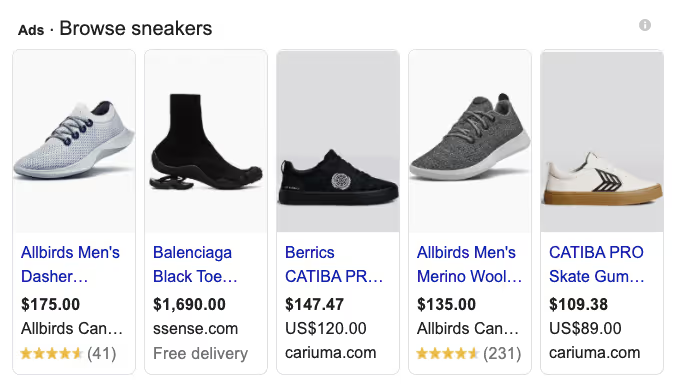
Conversation

🥳 Feedback Received!
Thanks for taking a moment to share your thoughts — it genuinely helps us make each chapter sharper.
What happens next:
- Your feedback goes straight to our product team.
- We’ll use it to refine lessons, clarify examples, and make the program even more useful.
Appreciate you helping make this program better for everyone.
Ready for your next challenge? 👇
Introduction: Google Ads
In this module, you’ll learn…
- What SEM and display marketing are
- How to use Google Ads to grow your business
- How to properly structure your Google Ads setup
- How to do keyword research
- How to optimize campaigns over time
Overview
Google Ads is one of the two largest ad channels. Only Meta (Facebook and Instagram) is nearly as effective.
It’s also one of the most consistently profitable channels.
Google Ads has a few very different types of campaigns. It has…
Search ads
The bread and butter of Google. Ads that display along with organic results as people search on Google.

Performance Max
As AI gets smarter, the algorithms that decide who gets served what ad, when, and where, are increasingly better left in the hands of the machine that has insane amounts of data on each user.
Performance Max is an automated campaign that you feed a bunch of copy and creative, and then it goes and serves it to people when and where it sees fit, across Search, Display, YouTube, and Discover.
These are great, but best to do after you already have >$5k/mo and have quite a bit of conversion data. AI needs data to do its job, and a fresh account spending $100/day just isn't enough for it to know what to do.
Display ads
Banner ads that display on sites and within apps that enable them

We'll be focusing on these in the context of Performance Max.
YouTube ads
Video ads on YouTube and on sites and within apps that enable them.
We'll be focusing on these in the context of Performance Max.
Shopping ads
Ecommerce product ads that display alongside search results and link directly to product pages.

Universal app campaign
An automated campaign similar to Performance Max that runs ads automatically across Search, Display, and YouTube ads. The only difference is that the goal is to drive people directly to the App and Play Stores to download your mobile app.
How we'll teach Google Ads
Google Ads is massive.
We will focus on Search in this module since it’s what we'd recommend starting with in 95% of cases. Most of what you learn when setting it up applies to the other types.
Beyond that, we'll explore Performance Max to make full use of Google's algorithm to automate Display, Search, and YouTube in one campaign.
Then if you'll launch Shopping if you're an ecomm business, and Universal App Campaigns if you run a mobile app.
But for now, let's dive into Search Ads.
Module structure
Due to the complexity and size of Google Ads, we’ll build your Google Ads account using a series of smaller projects, getting progressively more advanced and fine-grained.
First, we’ll introduce a topic and dive into its details. Then, we’ll apply those lessons to your account in a project.
After that, we’ll review more advanced concepts to apply over time as your account grows.
In the first project, we’ll build and improve a simple account from there.
You could write ads and start running them immediately after the first project, but we suggest waiting. If you kick everything off early, don’t judge performance too harshly until you finish the very end of the module.
Client story
One of our previous clients is Framer, a tool for designers similar to Figma that lets you prototype apps and build websites using AI.
They previously ran Google Ads with little success. When we came in and built out a comprehensive strategy involving Search, Display, and YouTube, we could drive tens of thousands of downloads per month across the three channels — often for only a few dollars per sign up.
This was a massive win since they had never seen any success from paid acquisition efforts.
We can tell a similar story for many of our clients (some making millions a month). Hopefully, we can tell a similar one about you.


